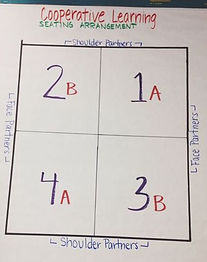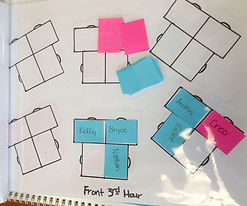
Developing Classroom Management Plan
The purpose of a classroom management plan is to provide students with a safe and fun yet structured learning environment, which allows the students to know what is expected of them as well as giving students expectations of what to expect from the teacher.
My management plan focuses on informing/teaching the students what is expected of them, rehearsing the procedure and then reinforcing the procedure.
My basic classroom rules presently are:
-
Listen and follow directions.
-
Raise your hand before speaking or leaving your seat.
-
Keep your hands and feet to yourself.
-
Respect your classmates and your teacher.
The detail and consequences of each of rules is given in the syllabus:
As a relatively new teacher I want to assess from the class how the classroom guidelines are working and I spend the first week of class discussing with the students to make the rules a class decision so that they understand the important of the rules and have a desire to be responsible in their decisions. Also during the beginning of the class I want to go over the expectations I have for grading as well and rehearse and reinforce even the basic things like labeling their paper/assignments, grading their work, and making up work they miss for being absent. One discussion I feel it is important to have with the students is that of self-respect and responsibility. Here is an example of a worksheet that would help with that discussion:
When dealing with misbehaving or disruptive students, before jumping to consequences, I would use positioning first, when able I walk around the room allowing my presence to help gain students attention without stopping what I am doing but teaching and having discussion with my students while I move about the room. When a misbehavior continues, I address it based on the level of the behavior and might ask the student to stay after class to ask them to explain their behavior and get us both on the same page as what is happening and while following the consequences in the syllabus, if it continues my next step would be calling for a student-teacher-parent meeting which might involve administrators and the principal. The purpose of the consequences though is given in the best interest of the student and to avoid as much disruption and missing of class time as possible.
As for parental communication, I have open communication and teamwork with the parents of my class because they know their students better than I do and I want to work with them to best teach students. I would begin the semester by sending out a parent letter informing the parents of who I am and how excited I am to teach their students and am looking forward to working with them to help their students learn the best they can.
Here is an example of the parent letter I write for students to take to their parents on the first day of class:
Some posters that I would like to hang around my class including some rules inspired by Kagan Academy:
Classroom arrangement
The arrangement as well as assigned seat is important in classroom management and can change the entire environment of a classroom.
There are two aspects of arrangement are important, the seating in pairs or groups and the placement of the pairs/groups around the room. Presently I am preferring pairs for easy access around the room.
It is important that the teacher is easily able to get to each of the students as well as that the students can all see the teacher and board well.
As for assigning students in groups, I learned from my mentor teacher the cooperative learning seating arrangement taught by Kagan.
Each group consist of 4 students and include a high level student (1A), med-high level student (2B), med-low level student (3B), and low level student (4A) seated in the arrangement shown in the middle picture below. This method allows students to have "shoulder" partners and "face" partners in which the low and high are never together so that one of the med-level students can relate to the low and high students. It's also important to switch up the seating every semester so that students in the back can experience the front and students can learn to work with other students they don't know. When placing students though I would use information learned and given to me in assigning seats.














